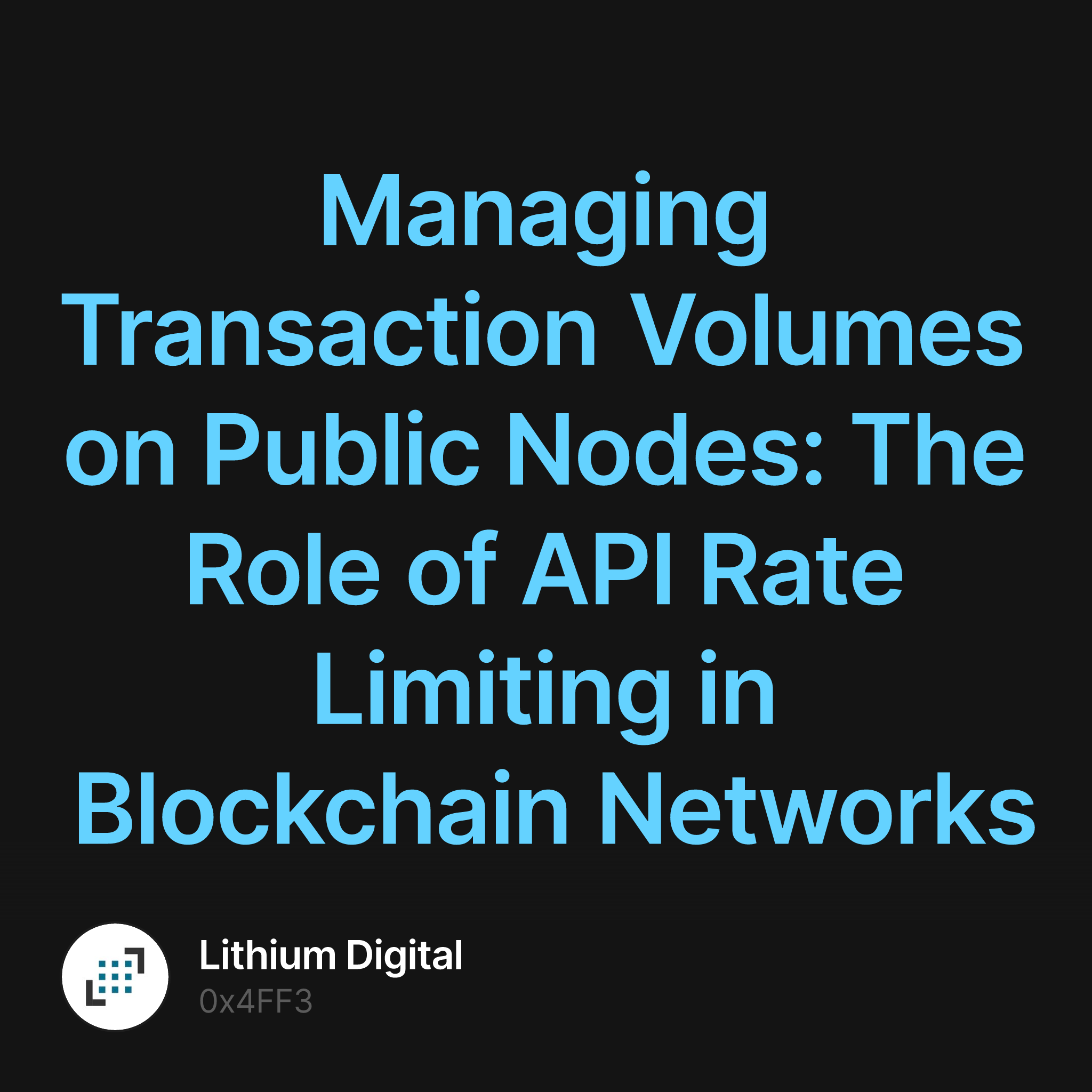Public nodes are essential for decentralised networks, allowing users to interact with the blockchain. As blockchain adoption has grown over the years, the number of transactions has also increased. This rise in transaction volume requires effective management to prevent public nodes from being overwhelmed and to maintain security. In this article, we will explore how to manage transaction volumes on public nodes, with a particular focus on API rate limiting. We will discuss how this approach significantly impacts maintaining network integrity.
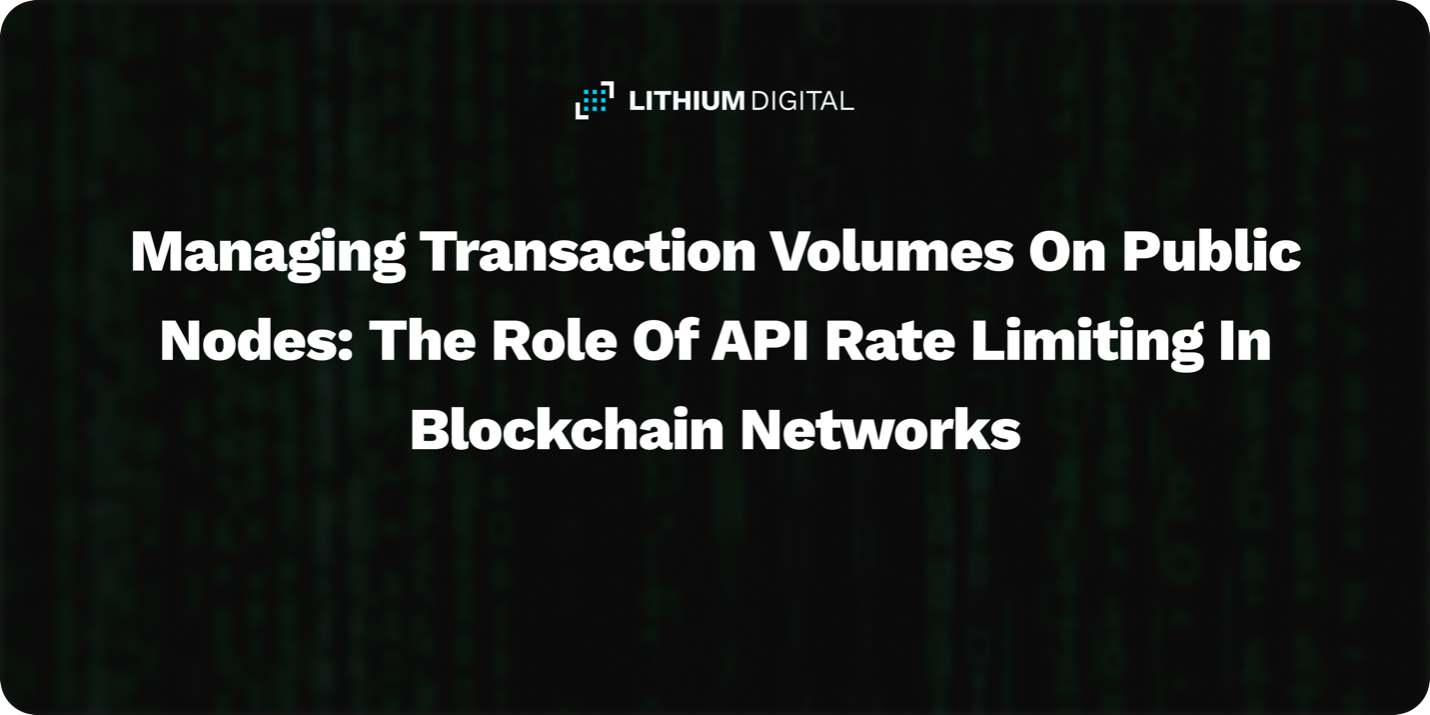
Overview on Public Nodes
Public nodes are essential to blockchain technology, as they make decentralisation possible. These nodes work together to fulfil utility and governance responsibilities, such as authenticating transactions and executing decision-making protocols. Each node across a network maintains copies of the ledger, storing encrypted transaction data while taking new blocks for scalable growth. Think of nodes as the storage containers of a blockchain, where users get their information.
According to Nicholas Edmonds, lead blockchain engineer at Topl, "Nodes are the source of truth for a blockchain". This reality is almost impossible to argue, because it has become obvious that without nodes, blockchain wouldn’t really be blockchain.
The word "public" are often associated with these nodes because of their open nature. nodes are completely transparent and accessible to any anyone to join and participate in the activities of the blockchain. Given the public nature of these nodes they become prone to potential abuse and high transaction volumes.
Challenges of High Transaction Volume in Public Nodes
Public nodes usually maintain a copy of the blockchain ledger, and as transactions are made, it keeps adding to this ever-growing ledger, requiring storage space and processing power for each node. As transaction volume increases, these nodes begin to face some challenges, such as:
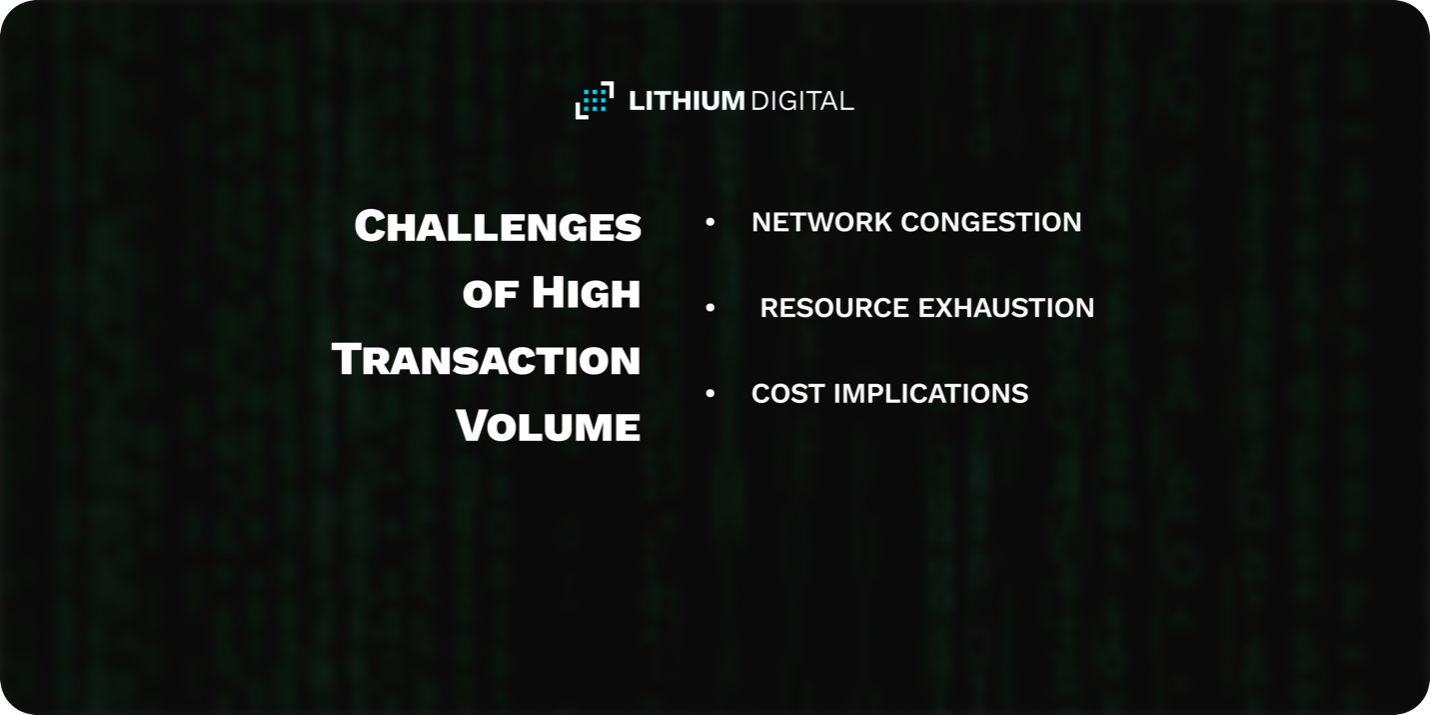
• Network Congestion: When transactions get excessive, confirmation times get very high, which in turn distrusts the user experience and affects API efficiency, consequently resulting to discouragement in adoption.
• Resource Exhaustion: When an API receives a request, it uses resources such as power, network bandwidth, memory, and CPU to process the request. High Volume transactions can easily exhaust these resources, leading to slower processing and even entirely crashing the system, jeopardising network uptime.
• Cost Implications: Public nodes require certain costs for infrastructure maintenance. These costs are borne by individuals and organisations who operate these public nodes, and when transaction volume is high the cost increases significantly.
API Rate Limiting: Balancing Growth with Security and Efficiency
An increase in volume might suggest growth, which is important for any API owner or operator. However, without limiting measures, it can have the opposite effect. API rate limiting serves as both a defensive security measure and a quality control mechanism.
When too many requests are made at once, APIs can become slow and inefficient, particularly during malicious attacks. Therefore, API rate limiting controls the rate at which requests are processed by setting limits on the number of requests a user can send within a given timeframe.
How API Rate Limiting Works
As already explained, API rate limiting, involves setting limit on the number of API requests a user can make within a set timeframe. When the threshold is reached, additional request are either delayed or entirely denied. Several Strategies can be used to implement rate limiting.
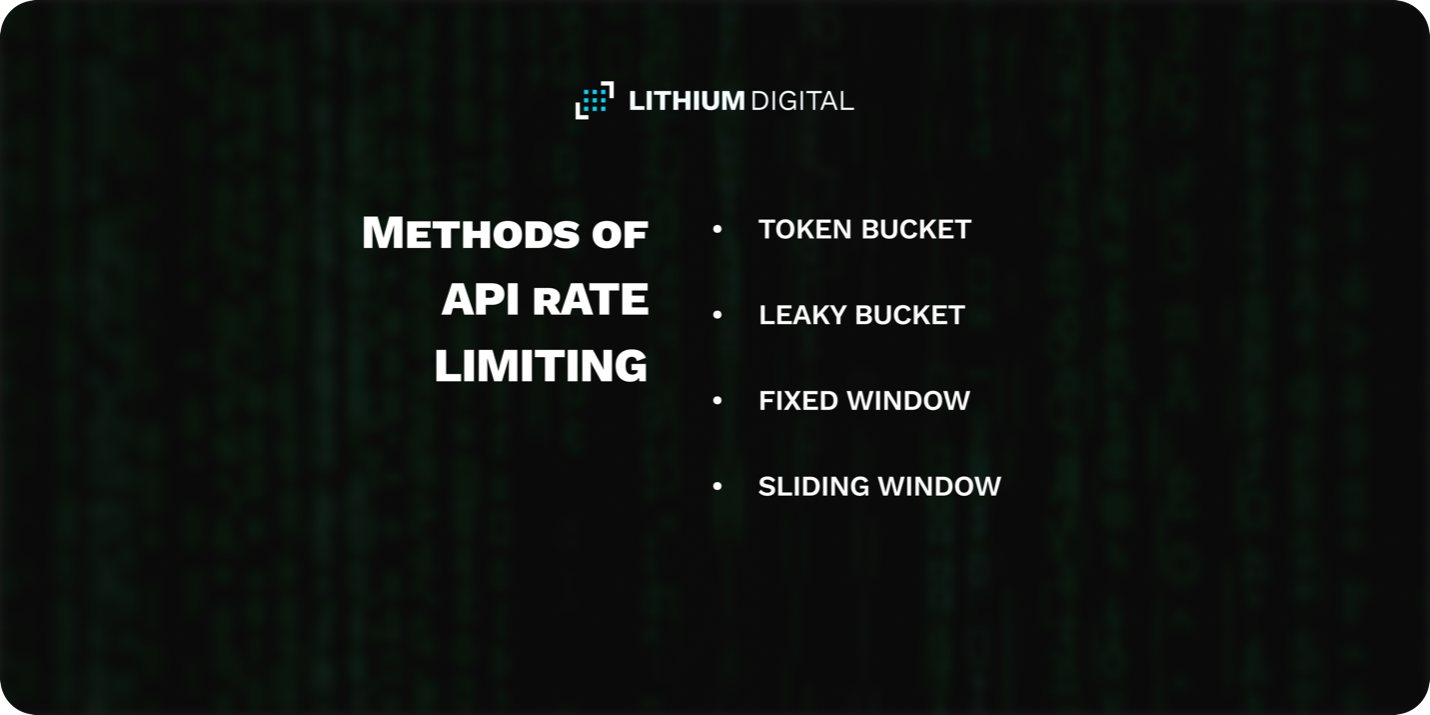
• Token Bucket: This method entails assigning a fixed number of tokens to each user with each API call consuming one token. When all assigned tokens have been exhausted, further API calls are delayed or entirely blocked.
• Leaky Bucket: This method is quite similar to Token bucket, however, it adds a delay to API Calls that exceed the rate limit. The delayed API calls are kept in the "Leaky Bucket" until the rate limit is renewed.
• Fixed Window: This method is time bounded, such that it sets a fixed limit of API request a user can make within a given time, such as minutes or hours. Once the limit is reached subsequent request are either delayed or entirely denied until the next window begins.
• Sliding Window: This method is a quite different form the fixed window method, in this method a log of timestamps for each API request is maintained and requests are allowed based on the count of logs within a sliding timeframe.
Implementing API Rate Limiting on Public Nodes
Now that we've covered how API rate limiting works, let's discuss the key considerations and best practices for implementing API rate limiting on public nodes.
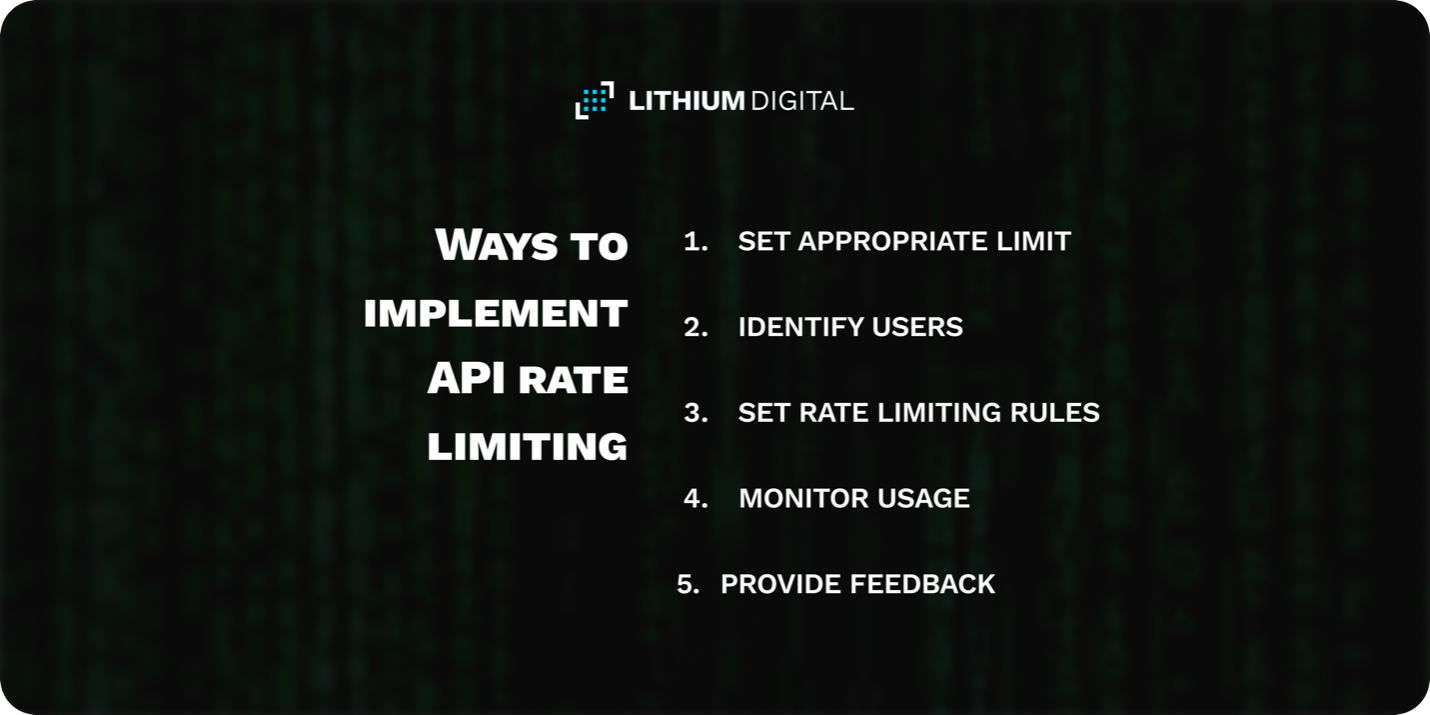
-
Set Appropriate Limit: The first step is to determine the number of requests a node can handle per unit of time without compromising performance. This requires careful observation and a thorough understanding of the node's capacity and typical usage patterns.
-
Identify Users: To enforce rate limiting effectively, it's essential to identify users. Common methods include assigning unique API keys to each user, tracking requests by IP addresses, or using user accounts. Each user includes their unique API key in their requests, allowing the system to monitor and limit their usage.
-
Set Rate Limiting Rules: Establish clear rules for rate limiting, including the maximum number of requests allowed within a specified time frame (threshold), the time window for these requests, and actions to take when limits are exceeded.
-
Monitor Usage: Implement monitoring mechanisms to track API usage and performance. This helps detect patterns that may indicate abuse or unusual activities, ensuring the system remains robust and reliable.
-
Provide Feedback: Inform users when their requests are rate limited. Providing feedback helps users understand the limits and know when they can make more requests.
By following these steps, you can implement effective API rate limiting on public nodes, ensuring fair usage and maintaining optimal performance.
Benefits of API Rate Limiting
If you have been following this article from the beginning so far, the benefit of API rate limiting may seem obvious already. To confirm the smart thought, you have already let's enumerate some benefits of API rate limiting.
• Balancing Limits: API rate limiting ensures balance and provides all users fair access to the to the nodes resources, reducing the tendency of having a small group monopolised the node.
• Security: Limiting the rate of request from a single source, protects the node from DoS (Denial of Service) attacks and other malicious activities.
• Performance Optimisation: API rate limiting prevents nodes from being overwhelmed by ensuring that nodes are not overloaded, such that requests are handled efficiently and optimal performance is maintained.
Finding the Right Balance: Trade-offs and Considerations
API rate limiting is indeed very effective. However, it is important to consider certain factors which may likely pose challenges to the nodes and build solutions around them.
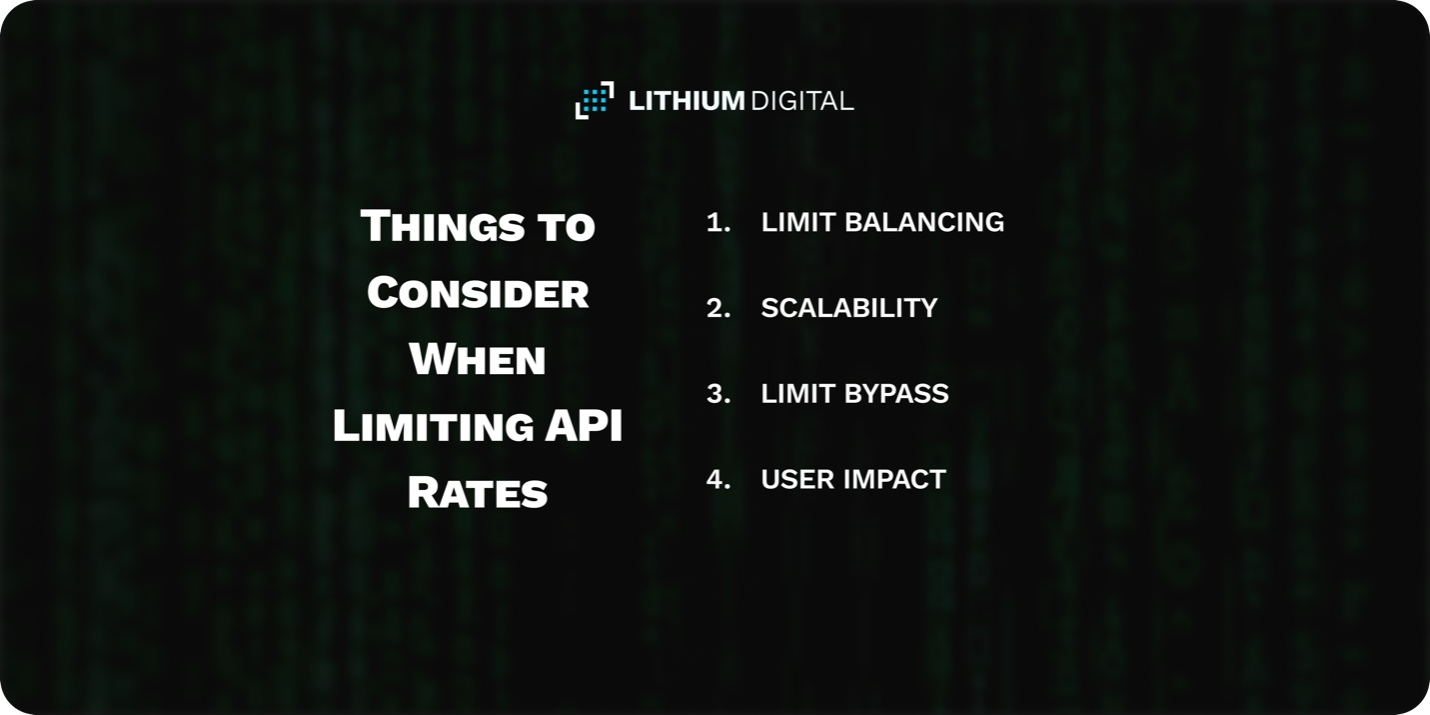
• Limit Balancing: When limits are set too low legitimate users may be inconvenienced and when limits are set too high can leave the node vulnerable to abuse, it is crucial to find the right balance.
• Scalability: The need to adjust rate limiting infrastructure may arise as the network grows, in other to handle increased usage and evolving pattern.
• Limit Bypass: There are users who may try out smart the system by attempting to bypass rate limits using common techniques as rotating IP or creating multiple accounts. To address this it is important to implement strong detection mechanisms depending on your peculiar needs and System Design.
• User Impact: While implementing rate limiting it is crucial to keep user experience in mind, especially high-volume users and applications that depends on frequent requests.
Conclusion
When transaction volume is adequately managed it aids the stability and efficiency of blockchain networks. API rate limiting is a key strategy in achieving this. while implementing rate limiting may come with some challenges, it benefits simply outweigh it changes when carefully implemented. The blockchain ecosystem is continuously evolving, and as this continues we expect new approaches that further enhance API rate limiting mechanism.
References
Public, Private, and Permissioned Blockchains Compared. Investopedia, 2024.
Optimizing API Resource Utilization with Rate Limiting and Throttle Controls. Lonti, 2023.
Network Congestion. Bybit, 2023.
Edmonds, Nicholas. "Getting to Know Topl: Nicholas Edmonds, Blockchain Engineer." Medium, 2018.
Brooke, Becher. What Are Blockchain Nodes and How Do They Work? Builtin, 2024.
